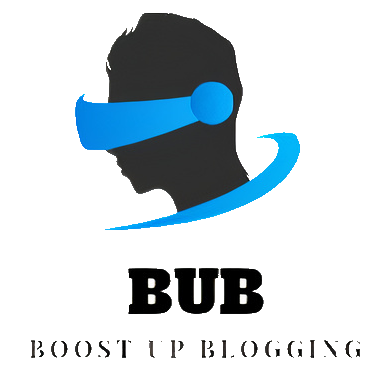How to check if an article is indexed or not?
In the vast digital landscape of information, where countless articles compete for attention and credibility, knowing whether a piece is indexed is akin to discovering an oasis in a desert—it’s essential for anyone seeking reliable knowledge. Imagine pouring over what seems like a brilliant article on your favorite topic, only to realize later that it’s languishing in obscurity, unrecognized by search engines and databases alike. This reality underscores the importance of understanding indexing, which enhances visibility and ensures that quality content reaches its intended audience.
But how can you discern whether an article has been successfully indexed? Fear not! In this guide, we’ll unravel the mystery behind indexing and equip you with practical tools and techniques to verify an article’s status. From utilizing advanced search queries to exploring specialized databases, you’ll learn how to navigate the intricacies of online content visibility. Whether you’re a researcher striving for academic integrity or simply a curious reader wanting the best information at your fingertips, mastering these skills will empower you to sift through the noise and uncover valuable insights with confidence.
What is Article Indexing?
Article indexing is the process by which academic and scholarly articles are cataloged and organized in databases, making them easily retrievable for researchers and readers. This meticulous procedure involves analyzing key aspects of the article, including its title, abstract, keywords, and overall content to determine its relevance and contribution to a specific field of study. Once indexed, an article gains visibility in search engines and academic platforms—ultimately enhancing its chances of being cited by other researchers.
Beyond mere organization, indexing represents a critical endorsement of quality; it signals that the work has met certain standards set by indexing agencies or journals. The various criteria may include originality, methodological rigor, or significance to ongoing conversations within a discipline. Consequently, an indexed article is not just easier to find; it’s also viewed as more credible within the academic community. This increases both the author’s reputation and the likelihood that their research will drive future studies or inspire innovation in practice—transforming not only how knowledge is disseminated but also how it evolves over time.

Why Indexing Matters for Visibility
Indexing is crucial for ensuring that your content reaches its intended audience. When search engines index your articles, they categorize and store them in vast databases, making it possible for users to find them through relevant queries. Without proper indexing, even the most well-researched and insightful pieces can remain hidden in the digital abyss, leading to missed opportunities for engagement and traffic.
Moreover, indexing can significantly influence your site’s credibility and authority in the eyes of both search engines and readers. Articles that are frequently updated and properly indexed signal to algorithms that your website is active and relevant. This not only enhances visibility but can also boost your overall ranking in search results over time. By understanding how indexing works, content creators can strategically optimize their articles—using appropriate metadata, keywords, and internal linking—to improve discoverability and increase their chances of being read by a wider audience.
Methods to Check Index Status
To effectively check the index status of an article, one powerful method involves utilizing Google’s site search. By typing site:yourdomain.com/article-url into the search bar, you can quickly see if your specific content has been crawled and indexed by Google. If it appears in the results, that’s a green light; however, if not, consider exploring further by ensuring your sitemap is submitted to Google Search Console and that there are no crawling issues affecting visibility.
Another approach is to employ tools like Screaming Frog or SEOptimer which provide comprehensive SEO audits. These tools can scan your website for various indexing attributes such as meta tags and robots.txt files that could be inadvertently blocking access to important content. Additionally, leveraging structured data testing tools lets you inspect whether your articles are being recognized for rich results in search engine listings—something inherently tied to indexing status and user engagement potential. Analyzing these insights equips you with actionable data to enhance discoverability and ensures that your best work reaches its intended audience effectively.

Using Google Search Operators
Understanding Google Search Operators can significantly enhance your ability to check if an article is indexed. These special commands allow you to refine your search queries, helping you quickly determine whether specific content has made its way into Google’s index. For instance, using the site: operator followed by your website’s domain allows you to see all indexed pages associated with it, giving a clear picture of whether your article shows up in search results.
But there’s more than just the basic operators. Incorporating additional filters like inurl: or intitle: can pinpoint articles that contain specific keywords within their URL or title, respectively. This granular approach not only reveals indexing status but also offers insights into how well similar articles are performing on Google’s platform. Remember, the clarity of your search depends heavily on how you structure these queries; experiment with combinations to uncover hidden gems in content performance and visibility!
Exploring Webmaster Tools for Insights
Webmaster tools can be a game changer when it comes to understanding how your articles are performing in search engines. Beyond merely checking if your content is indexed, these platforms offer a treasure trove of data regarding search queries, click-through rates, and even the overall health of your site. By diving into the Search Performance report, you can uncover which keywords are driving traffic to your content and identify opportunities for optimization. This insight allows you to refine existing articles or develop new ones that align more closely with what users are actively searching for.
Moreover, webmaster tools also provide crucial alerts for issues like crawl errors or indexing problems that could hinder visibility. Regularly reviewing these alerts ensures you’re not missing out on potential traffic due to technical setbacks. By analyzing user behavior through metrics such as average position and impressions, you can tailor future content strategies—staying ahead of competitors becomes much easier when you’re equipped with this knowledge. Engaging with these insights transforms how you approach SEO; you’ll no longer write in the dark but will instead craft articles that resonate with what real users want.

Checking with SEO Tools and Software
Utilizing SEO tools and software is an essential step in diagnosing whether your article has made it into the search engine’s index. Tools like Google Search Console provide a direct line to your site’s indexing status, allowing you to submit specific URLs for crawling and view any issues flagged by Google. This not only keeps your articles visible but also arms you with crucial data on indexing errors that might hinder visibility.
Moreover, third-party SEO analysis platforms, such as Ahrefs or SEMrush, can reveal valuable insights about backlinks and organic traffic. These tools allow you to track backlink profiles—an important factor since well-linked content tends to rank better and gets indexed more efficiently. Some software even perform real-time audits of pages to ensure they adhere to best practices for SEO optimization. Armed with this information, creators can pivot their content strategy based on performance metrics rather than assumptions alone, enhancing both discoverability and user engagement.
Conclusion: Ensuring Your Articles are Indexed
In conclusion, ensuring your articles are indexed is a critical step in maximizing their reach and impact. An article not indexed by search engines remains hidden in the vast ocean of online content, leaving its potential untapped. Regularly auditing your content through tools like Google Search Console can provide invaluable insights into their visibility status and allow you to rectify any issues promptly.
Moreover, consider optimizing your articles for both user experience and search engine algorithms. This means using relevant keywords strategically while maintaining engaging readability for your audience. Don’t just think about indexing as a one-time check; instead, adopt it as an ongoing strategy that complements your continuous SEO efforts. With vigilant monitoring and adaptive adjustments, you can elevate the likelihood of being discovered amidst the clutter of digital information, ensuring that each piece contributes effectively to your overall goals. Embrace this process as an opportunity for growth—both for your articles’ performance and for establishing yourself as a reliable voice within your niche.







